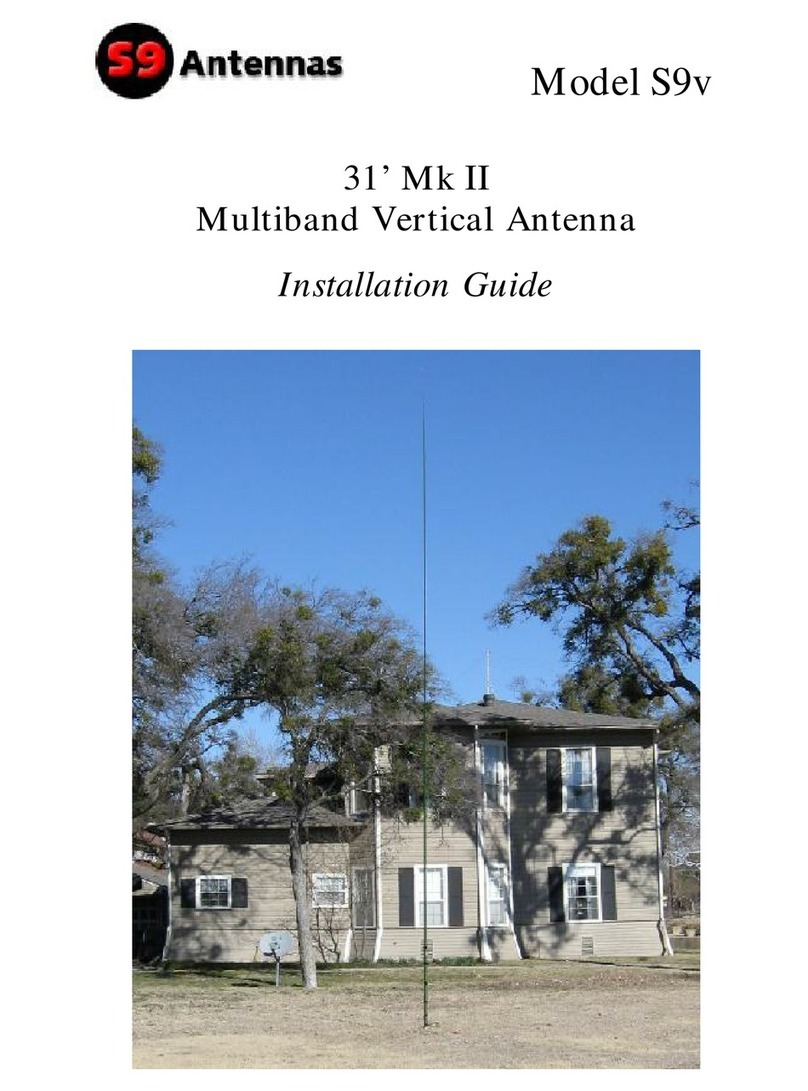
S9v 18’ Mk II Installation Guide
_____________________________________________________________________________
________________________________________________________________________
3
Antenna Tuner
Since the S9v is extremely close to ¼-wavelength on 20 meters, it can be used
as a serious 20 meter monoband DX antenna using the antenna tuner inside
your rig (or with an external antenna tuner). In this configuration, the coax cable
can be directly connected to the S9v using the supplied ring terminal connectors.
Radials and a 1:1 current choke balun (located outside of the radial field) are
strongly recommended in this configuration. As a 20 meter monoband antenna,
the S9v can be mounted on the ground or as an elevated ground plane antenna
on a pole, on your roof or on a tower.
If you want to use the S9v as a multi-band antenna, you will need a 4:1 unun and
a quality antenna tuner in your shack. (Internal rig tuners do not have adequate
range to match the higher impedances presented by the antenna on bands
above 20 meters.) We recommend the LDG Electronics series of auto tuners for
use with the S9v. LDG tuners easily handle the wide-range of impedances
presented by the S9v over the higher HF frequencies.
Using a weatherproofed, remote antenna tuner at the antenna feed point ensures
absolute lowest signal loss and best overall multi-band performance. There are
several remote antenna tuners on the market. When a remote tuner is used at
the S9v feedpoint, a 4:1 unun is not required but a 1:1 current choke balun may
be needed between your transmitter and the antenna (outside of the radial field)
if you experience RF current in your shack. (Burying your coax cable also helps
minimize RF current from flowing back into your shack.)
Balun/Unun
For 20 meter monoband use, a 1:1 choke balun should be inserted in-line with
your coax outside of the radial field to prevent RF from coming back into your
shack over the coax shield. There are several commercially-available 1:1 current
choke baluns (Balun Designs being one of the best – see them at
www.balundesigns.com) or you can create a simple current choke balun using
your coax feed line.






























